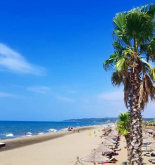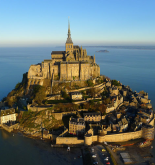Did you know that the United States, Russia, Germany, China, and Japan do not have the most “bunkers” or underground shelters?! During the dictatorship of Communist Enver Hoxha (1950-1985), Albania built almost 600,000 bunkers, which means that the whole current population plus Albania’s army (3,215,988) could fit within if there was a war.
Country with the largest number of bunkers
Albania is densely packed with concrete military bunkers, with an average of 5.7 bunkers per square kilometer (14.7 per square mile). Between the 1960s and 1980s, the bunkers (Albanian: bunkert) were constructed throughout the country by Enver Hoxha’s Stalinist and anti-revisionist regime; by 1983, a total of 173,371 bunkers had been completed.
Hoxha’s “bunkerization” (bunkerizimi) program resulted in the construction of bunkers throughout the former People’s Socialist Republic of Albania, from mountain passes to city streets. They were never employed for the reason planned during Hoxha’s reign. The cost of building them drained Albania’s resources, diverting them away from more immediate requirements, such as addressing the country’s housing scarcity and poor road network.

The bunkers were abandoned following the communist government’s disintegration in 1992. A few were used in the 1997 Albanian revolt and the 1999 Kosovo War. The majority are currently vacant, while others have been repurposed for a variety of purposes, including residential housing, cafés, warehouses, and animal or homeless shelters.
History of the country with the largest number of bunkers
From the end of World War II until his death in April 1985, Enver Hoxha’s politics were influenced by both orthodox Stalinism and Maoism. He severed ties with the Soviet Union following Nikita Khrushchev’s reformist Khrushchev Thaw, removed Albania from the Warsaw Pact in 1968 in protest of the Warsaw Pact’s invasion of Czechoslovakia, and severed ties with China during a 1972 visit to China by US President Richard Nixon.
Additionally, his regime was antagonistic to the country’s immediate neighbors. Albania did not terminate its state of war with Greece, which dated all the way back to the Second World War, until 1987 – two years after Hoxha’s death – due to worries about Greece’s territorial ambitions in southern Albania and Greece’s NATO membership.
Hoxha was vehemently opposed to Josip Broz Tito’s administration in Yugoslavia, accusing it of having a “anti-Marxist and chauvinistic attitude toward our Party, our State, and our People.” He said that Tito intended to conquer Albania and establish it as the seventh republic of Yugoslavia, and he condemned the Yugoslav government’s treatment of ethnic Albanians in Kosovo, alleging that “Yugoslav officials are pursuing an extermination program there.”
Albania retained some ties to the outside world during this period, dealing with neutral countries such as Austria and Sweden and creating trade routes across the Adriatic Sea with its former aggressor Italy. Hoxha, however, halted a minor relaxation of internal controls in 1973 with a renewed wave of repression and purges intended against individuals, the young, and the military whom he felt would endanger his grasp on the country. In 1976, a new constitution was adopted that strengthened the Labor Party’s authority over the country, restricted private property, and prohibited foreign financing. The country was virtually cut off from the outside world during a decade of isolation and economic stagnation.



